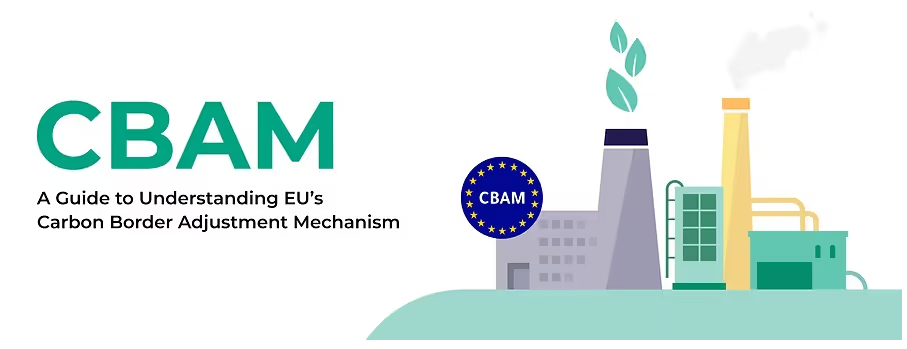
Solutions
Carbon Management
ESG Intelligence
Climate & Nature Risk
Data Registry
Beta
Sector
Get started, schedule a demo or request a free assessment!


The European Union (EU) has established itself as a global leader in the fight against climate change. A cornerstone of its strategy is the Carbon Border Adjustment Mechanism (CBAM), a policy designed to revolutionize the EU Emissions Trading System (EU ETS) and incentivize significant reductions in global greenhouse gas emissions. This blog post dives deep into the intricacies of CBAM, exploring its goals, mechanisms, potential challenges, and its far-reaching implications for businesses and the global trade landscape.
Before delving into CBAM, it's crucial to understand the existing framework: the EU ETS. Launched in 2005, the EU ETS is the world's first and largest cap-and-trade system for CO2 emissions. It operates by setting a gradually decreasing cap on the total amount of certain greenhouse gases that can be emitted by industries covered by the scheme. Companies receive or purchase emission allowances, allowing them to emit a specific amount of CO2. This system incentivizes businesses to reduce emissions by making them a tradable commodity with an associated cost.
While the EU ETS has been successful in reducing emissions within the EU, a concern emerged: carbon leakage. This phenomenon occurs when, due to stricter carbon pricing regulations in the EU, businesses relocate their operations to countries with less stringent regulations. This undermines the effectiveness of the EU ETS and creates an unfair advantage for companies operating outside the EU.
The Carbon Border Adjustment Mechanism (CBAM) is the EU's response to carbon leakage. It aims to ensure that the environmental costs of imported goods are reflected in their final price, creating a more level playing field for EU industries and incentivizing global emissions reductions. Here's a breakdown of CBAM's core functionalities:
The selection of these sectors is based on their significant contribution to global emissions and their trade exposure within the EU.
In essence, CBAM creates a financial disincentive for importing goods with a high carbon footprint. By requiring importers to account for the embedded emissions, the EU aims to encourage global producers to adopt cleaner technologies and reduce their emissions throughout the supply chain.
The implementation of CBAM is a complex undertaking with several potential challenges to consider:
Addressing these challenges will require close collaboration between the EU, businesses, and international organizations. Open communication, transparent guidelines, and a commitment to continuous improvement will be essential for navigating the implementation process.
The introduction of CBAM presents both challenges and opportunities for businesses operating within the EU and those exporting goods into the bloc. StepChange is here to equip you with the knowledge and resources necessary to navigate this evolving landscape and ensure compliance with the new regulations. Here's how we can support you:
By partnering with StepChange, you gain access to a team of dedicated professionals who can guide you through every step of the CBAM process. From understanding the regulations to developing a robust compliance strategy, we are here to help you navigate this new reality and seize the opportunities it presents.

.svg)